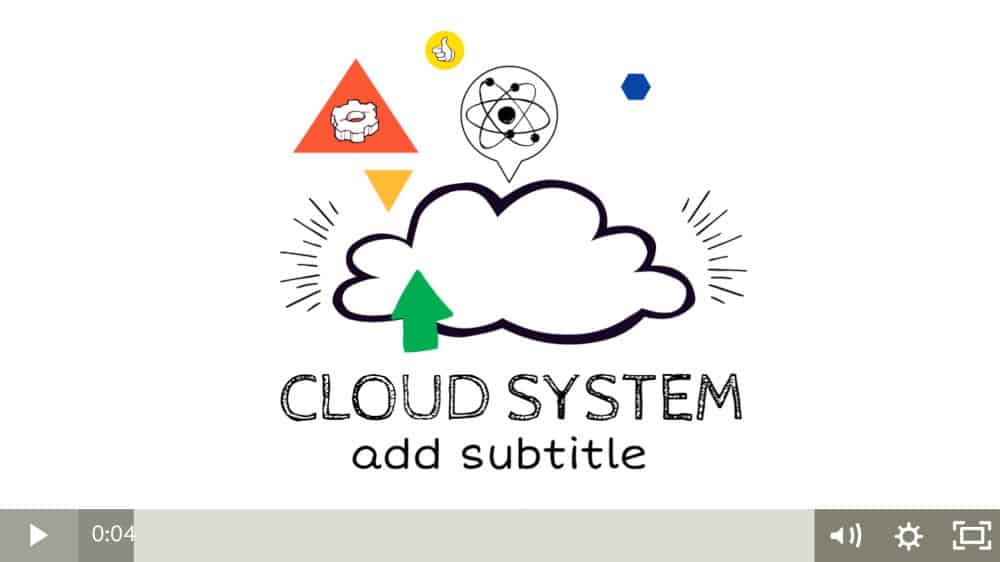Our content is reader supported, which means when you buy from links you click on, we may earn a commission.
6 Types of Video Production to Consider Creating

When it comes to creating videos for online courses and training, there are several different video production types you can choose from.
It’s worth the time to learn about the different types of video production so you know which fits your next project best.
According to a study from Wyzowl, the most common video types created by marketers include explainer videos (72%), instructional/presentation videos (49%), testimonial videos (48%), video ads (42%), and sales videos (also 42%).
Video is so popular that more video content is uploaded in a month than what TV networks in the U.S. have created in the last 3 decades.
In this guide, we’ll cover the details of each type so you can decide which is best for your needs.
1. Educational Videos
Educational videos exist to educate people on something new or different. These types of videos are a great way to learn about new topics or review old ones.
By watching someone else explain a concept, you can get a better understanding of it yourself. Educational videos can be found on many different topics, from history to science. You can even find educational videos on how to do things like bake a cake or play the guitar.
Educational videos can usually be watched at any time, so they can be easier to fit into a viewer’s schedule. And if they ever get stuck, they can always pause the video and rewind it.
There are many different ways to create educational videos, including screencasts, whiteboard videos, and even live streams. Whatever the format, educational videos should be short, concise, and focused on a specific message. This way, viewers can easily absorb the information and put it to use.
Instructional Videos
Instructional videos can be a great way to learn new skills or information.
Offering instructional videos can increase retention as shown in a study by Insivia where viewers remembered 95% of a video message versus only 10% from a text-based message.

They are meant to give people step-by-step instructions on how to complete a task.
They provide instructions that can be paused and replayed as needed. This can be especially helpful for complex tasks that are difficult to describe in written form. A good example of instructional videos would be a cooking tutorial.
Instructional videos can also be a convenient way to learn, as they can be accessed at any time and from any location with an internet connection.
To create instructional videos, you’ll need to have a clear and concise video script. This will ensure that your video is easy to follow and understand. You’ll also need to choose the right format for your video.
Some common formats for instructional videos include screencasts, whiteboard videos, and live streams.
2. Promotional Videos
Promotional videos are often used to promote products or services. They’re often embedded directly onto a web page sometimes with text around them.

Promotional videos can also be used in email marketing campaigns or social media posts.
Promotional videos should be short, to the point, and persuasive. They should highlight the benefits of what you’re promoting and leave viewers wanting more.
A promotional video should include the following elements:
- An introduction to your product/service.
- A specific mention of your target audience so they know they are in the right place.
- How your product/service will benefit the viewer.
- End with a call to action.
Testimonial Videos
Testimonials videos are very effective for building trust and credibility. They are easy to produce, especially if you already have the video footage. These videos can be used in ads, which can help increase sales.
When creating testimonial videos, make sure to choose diverse groups of people. You’ll want to include people of different genders, ages, races, and religions. This will help you reach a wider audience.
You should also try to get testimonials from people who are well-known in your industry. This can help add even more credibility to your video.
To get the most out of testimonial videos, make sure to include the following elements:
- A personable introduction.
- The customer’s story.
- How your product/service has helped them.
- A call to action.
Explainer Videos
Explainer videos are video productions that teach people about a particular topic.
They are usually short, informative videos that explain a complex subject in a simple and engaging way. Often, they’re under two minutes long and use a mixture of animation and live-action footage to break down the topic into bite-sized pieces.

Explainer videos often use voice-over to provide further explanation, and they always end with a call-to-action, such as signing up for a newsletter or downloading a white paper. Because they are so effective at communicating complex information in an easy-to-understand format, explainer videos have become increasingly popular with businesses and organizations of all sizes.
Because these videos are meant to help viewers understand something complicated, they tend to be more visual than other kinds of online videos. This means that they often use animated presentations, which can be costly to produce.
To create an effective explainer video, you’ll need to have a clear understanding of your target audience and what they need to know. You’ll also need to create a video script that breaks down the information in an easy-to-understand way.
3. Product Videos
Product videos are a great way to showcase new products. They provide potential customers with a look at the product in action, and they can be useful tools in the decision-making process.
Product videos can also help to build brand awareness and loyalty. When customers see a product video, they are more likely to remember the brand and be more likely to purchase from that company in the future. Product videos are an effective way to reach potential customers and promote products.
A well-made product video will help you reach out to your audience and convert them into buyers. Product videos should be well-made and informative, without being too salesy. You’ll want to show off the product in all its features and benefits, without overselling it.
4. Documentary Videos
Documentary videos are a type of video that captures real-life events or stories. Documentaries can be educational, informative, or simply entertaining. A documentary is an educational tool that helps viewers learn something new.
There is no one formula for making a documentary, but they all seek to tell a true story in an engaging way. Documentary videos often use interviews, archival footage, and on-the-scene footage to create a compelling narrative.
Some of the most popular documentary films have tackled wide-ranging topics such as world history, culture, and the natural world. There are many different genres of documentaries. Some focus on current issues while others take a historical approach.
A good documentary should be entertaining while informative.
5. Entertainment Videos
Entertainment videos are a type of video content that is designed to entertain viewers. They can be either short or long, and often feature celebrities or popular personalities.

Entertainment videos can be found on many different websites and platforms, including YouTube, Vimeo, and Dailymotion.
While some entertainment videos are simply meant to be fun or humorous, others may also aim to inform or educate viewers about a particular topic. Entertainment videos are typically produced by professional studios or production companies, but they can also be created by amateur filmmakers.
There’s a wide variety of entertainment videos out there, ranging from travel videos to comedy shows. Entertainment videos are often shared online through social media platforms like Facebook and Twitter.
6. Narrative Videos
Narrative videos are a type of video that tells a story through an actor or narrator. They typically have a beginning, middle, and end, and they often feature characters and plotlines.
Narrative videos can be very effective at conveying messages and emotions. They can also be very entertaining to watch. Narrative videos are often used in advertising, but they can also be used for educational or informational purposes.
Narrative videos can be live-action or animated, and they can be of any length. Short narrative videos are sometimes called “vignettes.”
Since all narrative videos tell a story, they are highly engaging and share-worthy. They can be great for creating a story around a product or brand. A good narrative video can give your company an edge over competitors.
FAQs on Types of Video Production
What is video production?
Video production involves conceptualizing, shooting, and editing video footage to create a final product that can be distributed online or through other channels. The process can be complex, depending on the type and quality of video that you want to produce.
However, there are a few key steps that are involved in most video production projects. These include:
- Coming up with an idea for your video. What is it that you want to communicate? Once you have an idea, you need to create a video outline, write a script, and create a storyboard to outline the action.
- Shooting the footage. This can be done with a digital camera, smartphone, or even a drone. Once you have all of your footage, it’s time to edit it together into a finished product. This is where you’ll add music, transitions, and other elements to create a professional-looking video.
- Exporting your video in a format that can be shared online or through other channels.
What is the importance of video production?
Video production is important for a number of reasons. It helps to communicate messages in a clear and concise way. It can also be used to generate leads and sales. In addition, video production can help to improve brand awareness and create an emotional connection with viewers. Lastly, video production can also be used to create educational content or simply entertain an audience.
Whatever the purpose, video production is an essential tool for businesses and organizations of all types. By investing in quality video production, businesses can ensure that their messages are communicated effectively and that their products or services are seen by the widest possible audience.
What are the 3 phases of video production?
The three phases of video production are pre-production, production, and post-production. Video planning takes place in pre-production. This is where the video concept is created and the script is written. The production phase is when the video is actually shot. And in video post-production, the footage is edited and the final video is created.
Each of these phases is important to the overall process, and each one requires its own set of skills and knowledge. But by understanding the basics of each phase, you can get a good idea of what goes into making a great video.
What are the main types of video styles?
There are many different types of video styles you can use to create engaging content. Screencasts, animation, live videos, and more. Each has its own strengths and weaknesses, so it’s important to choose the right style for your needs.
Screencasts are great for explaining complex concepts or demonstrating how to use a product.
Animated presentations can be used to inject some personality into your videos or to bring concepts to life that would be difficult to film in live action. Animations can include whiteboard animations as well as text overlay animations.
Live-action videos are perfect for webinars or creating a feeling of intimacy with your audience. N
Final Thoughts: Types of Video Production
So there you have it – a comprehensive guide to the different types of video production.
Now that you know what’s out there, it’s time to get creative and start planning your next video. In fact, according to Social Media Week, 54% of online consumers hope to watch more videos so it’s worth it to create more!
Remember, the most important thing is to keep your target audience in mind and make sure the content is relevant and engaging.
Are you ready to create a video that wows your viewers?